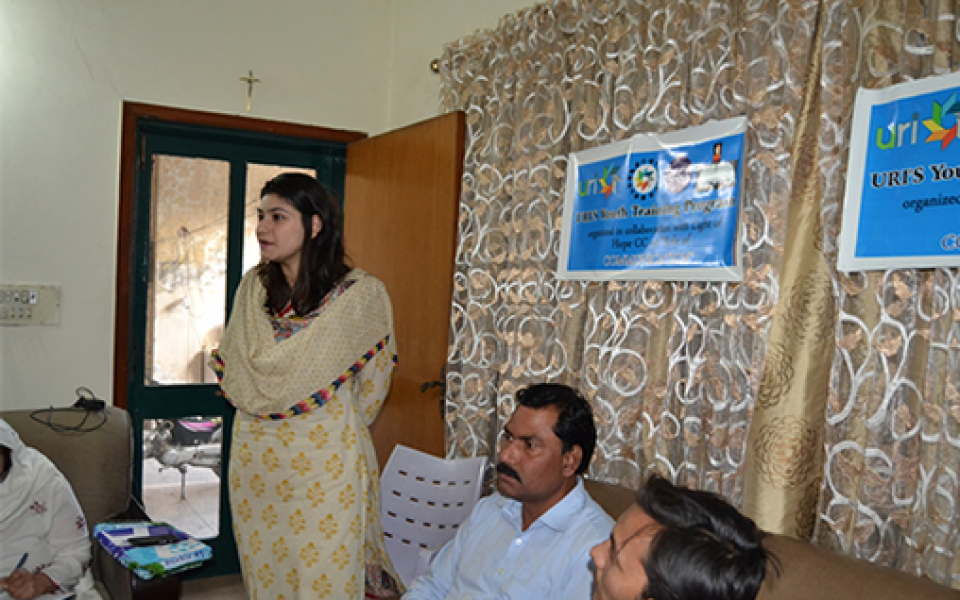
Miss. Zara Pervaiz Channan, Coordinator of Light of Hope Cooperation Circle, addressing the group.
On the 10th of April, 2017, URI Pakistan, in collaboration with Light of Hope Cooperation Circle, organized training with twenty-one participants, male and female, at Dilkusha Garden in Lahore.
The participants consisted of college and university students from Lahore, and youth from a church-run literacy program. The training began with prayer: Christian prayers by Pastor Francis, and Muslim prayers by Ch. Zubair Ahmad Farooq. Ms. Zara Pervaiz Channan, Coordinator of Light of Hope Cooperation Circle, welcomed all participants: Ms. Tasneem Saeed, URI youth trainer, Mr. Ch. Zubair Ahmad Farooq, Mr. Asher Nazir, Executive Secretary of URI Pakistan, and Mr. Faisal, Executive Secretary of Peace Center Lahore.
Mr. Asher Nazir spoke of URI’s activities and the URI Newsletter UMANG. He said, “Just as some of you would have heard of the United Nations, which is a body of many organizations who come together to defend people’s rights and freedom, URI is a body of people from different faiths.”
Ms. Tasneem Ortt Saeed, the Youth Trainer of URI, began the session by asking “What is communication?” She said that a large part of communication is that any person can give and understand instructions, learn new things, ask questions, and convey information with ease. Part of communication also involves adapting ourselves to a new situation and reading the behavior of others and compromising to reach a new agreement, as well as avoiding conflict. A large part of good communication is about being empathetic.
The posture for good communication to occur is: open hands, good eye contact, wearing a smile, and having respect for others’ personal space. Also, good body language displays that one has a positive attitude and helps in presenting one as a reliable and open person. Communication entails a clear and audible diction, and that the speaker’s thought process is clear and logical. Speaking well requires one to adapt to suit our audience, changing one’s word choice and tone in different situations
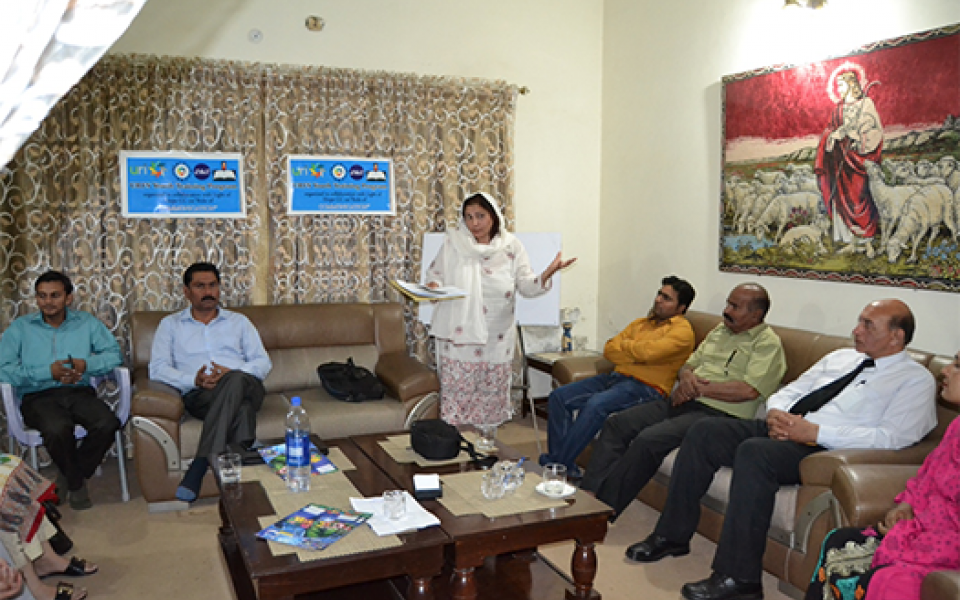
Ms. Tasneem Saeed, Youth Trainer, gives a talk.
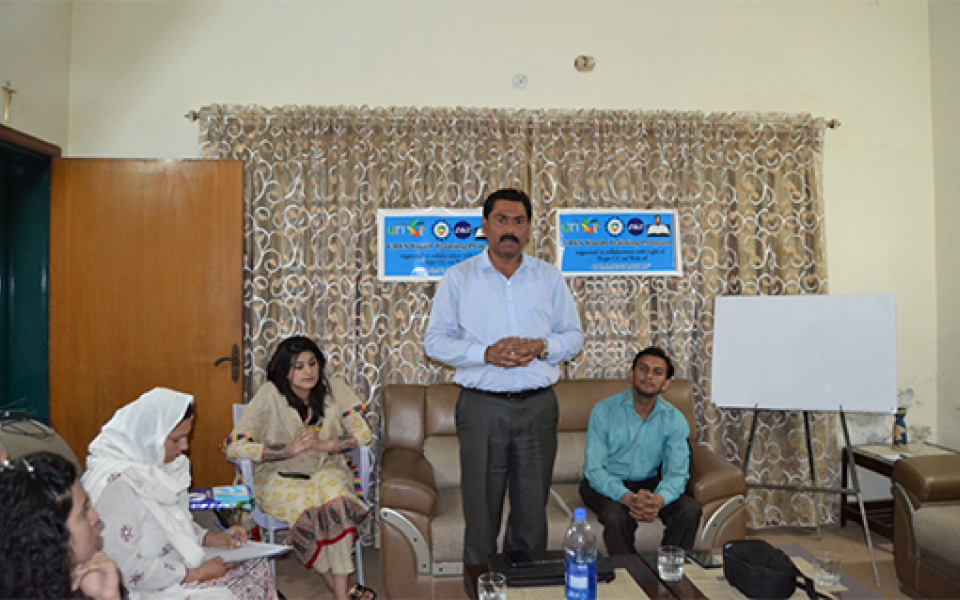
Mr. Asher Nazir gives input at the occasion
Types of Communication:
There is verbal communication, in which the speaker orally conveys messages. Non-verbal communication includes positive facial expressions and body language, eye contact and using gestures. Research shows that 55% of human communication occurs through non-verbal facial expressions, etc.
Verbal communication is dependent on factors such as listening and then asking for clarification. Before language, humans communicated through pictorial means, then symbols were developed to denote meaning. Thus, communication is a process by which meaning is assigned and conveyed to create a shared understanding. This requires processing information, listening, observing, speaking, questioning, analyzing gestures, and evaluating these.
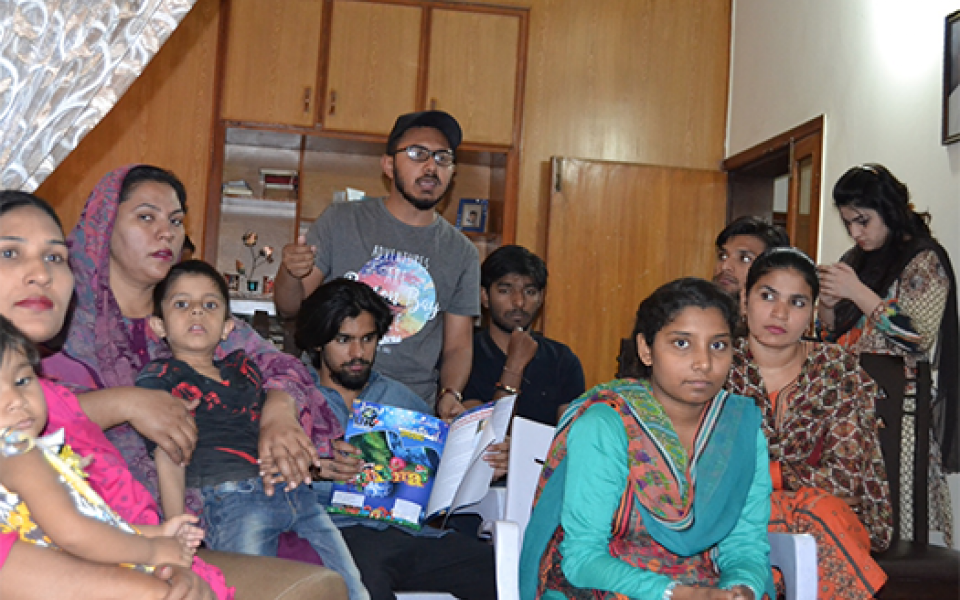
Some of the participants of the training of communication
Tips for Communication are:
- Engaging your audience by making eye contact and listening carefully.
- Use gestures with your hands and face.
- Don’t send mixed messages, and make your voice tone, expressions and words match each other e.g. disciplining someone with a smile will send mixed messages.
- Be sure of your body language.
- Arms crossed and shoulders hunched suggest disinterest and convey an unwillingness to communicate.
- Manifest constructive attitudes and beliefs.
- Choose to be honest, patient and optimistic. Also, be sincere in your comments and respect others.
- Develop effective listening skills.
Good communication also involves enunciating one’s words clearly and pronouncing one’s words correctly. As well as choosing the correct word to convey the appropriate meaning. Slow down your speech when one is addressing people, as delivering a lecture may make your adrenalin flow faster and one may speak faster than usual. Using an appropriate pitch of voice is a good technique while delivering a speech. Also, avoid a monotone voice, as this could result in people being uninterested in listening.
As an activity, Ms. Tasneem asked the participants what is good communication and bad communication. The participants mentioned using good body language and appropriate language while communicating with someone.
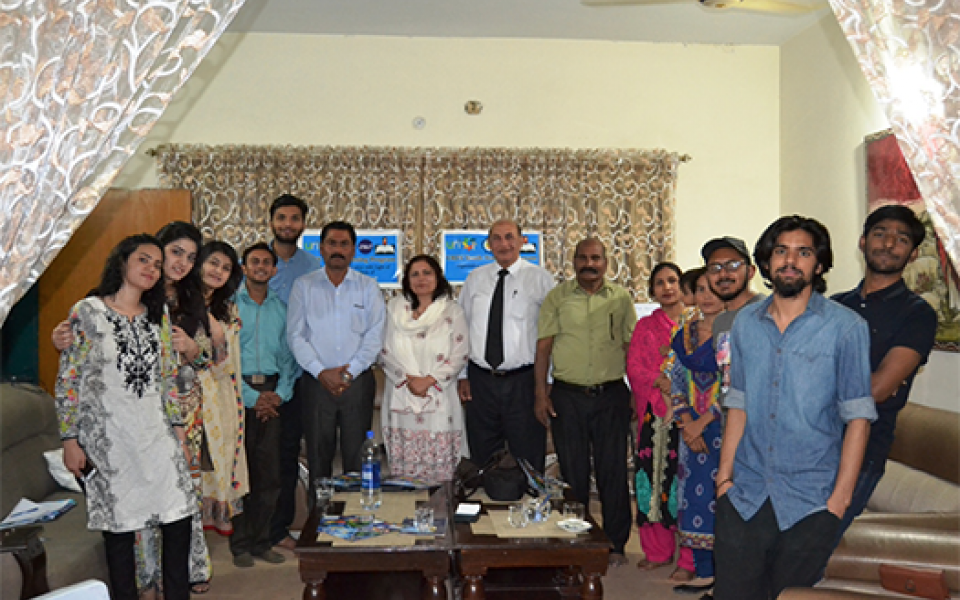
Group photo of the participants.
One participant asked, “What are the challenges in communication we face in URI?” Ms. Tasneem mentioned that in URI, for instance, Fr. James Channan relates to people from different faiths and thinking, which is a challenge. He has good communications skills, which people like very much. The Trainer in the end recommended that the participants should go out and communicate and build relationships so that their circle grows. She also recommended that they stay away from negative terms, as it does not put them in a good light.
Faisal Ilyas, Executive Secretary of Peace Centre, mentioned that currently the government is not focusing on empowering youth. This is evident from the lack of young parliamentarians. He suggested there should be special programs for young people.
Reported by:
Tasneem Saeed and Asher Nazir,
URI Pakistan
